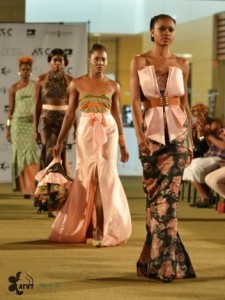“Changes call for innovation and innovation leads to progress.” – Li Keqiang (current Premier of the State Council of the People’s Republic of China.)
 Unless you have been living under a rock for the last decade, the world is changing. For Africans this change has been extremely positive, as the globe realizes the value that the continent has to offer. This can be witnessed at events such as the recently concluded African Fashion Week in Toronto, Canada. Here the twists, turns and surprises of Africa’s fresh principles of style were put on the global canvas to be admired. Activities during the Fashion Week included runway shows, cocktail parties, and browse pop-up shops were all available to all the people in attendance.
Unless you have been living under a rock for the last decade, the world is changing. For Africans this change has been extremely positive, as the globe realizes the value that the continent has to offer. This can be witnessed at events such as the recently concluded African Fashion Week in Toronto, Canada. Here the twists, turns and surprises of Africa’s fresh principles of style were put on the global canvas to be admired. Activities during the Fashion Week included runway shows, cocktail parties, and browse pop-up shops were all available to all the people in attendance.
Since inception in 2012, bold patterns, bright colours and eye-catching headpieces have dominated the Africa Fashion Week Toronto’s events. However one thing that has changed from the beginning is the sort and magnitude of attention the initiative is attracting. It is now a nationally-recognized event; thus creating a community of designers, models, and industry professionals who participate to either solidify their reputation or make a name for themselves in the fashion world. Nigerian designer Adebayo Jones — known as the King of Couture — was one of the most prominent designers in attendance. Olympian Ben Johnson, who has recently ventured into fashion design, and John Bosco, the Consul General of Ghana for Canada, were among high profile attendees.
The fact that the roar of the African lion is beginning to be heard across the world is nothing new; African designers have numerous opportunities to showcase their work globally. This is why the Africa Fashion Week Toronto must receive special recognition. Why? Because unlike other events this is about providing a level playing field for students and professionals which is often overlooked in the African context, where experience or age always come first. It is for this reason that we must not focus on the statistics of how many people were in attendance, or how many designers (both student and professional) showcased their designs — but the fact that the two different groups were viewed as equals during the event. Africans living in the diaspora often chests thumps and yell from the mountain tops of their African heritage. But what exactly does this mean?? It is events such as these that Africans in the diaspora and Africans from the homeland can come bridge the gap, work together thus create solutions that celebrate Africa.
Source: http://afwt.ca/
Photo credits: torontolime.com




